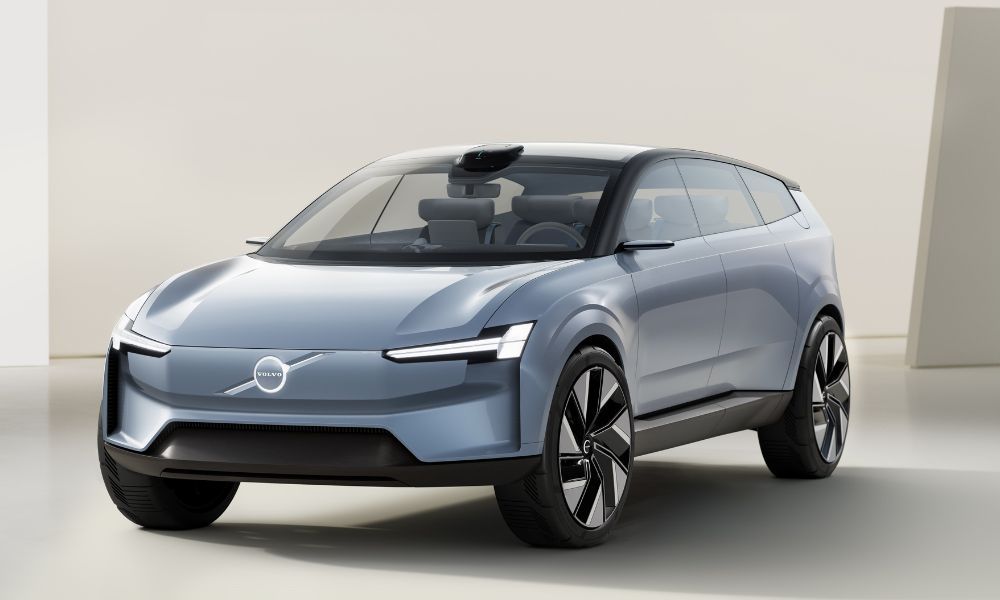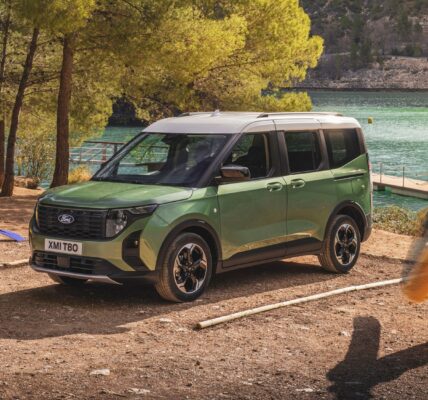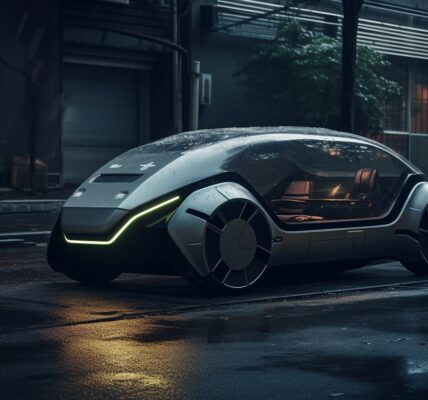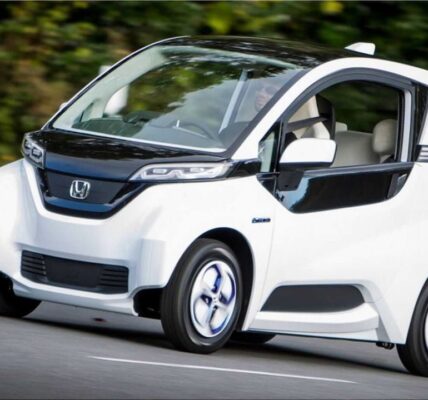Volvo gets it. Electric cars are batteries on wheels that can be used to fry bacon at your campsite, support the grid, power your home, charge a friend’s EV, or earn extra money for their owners by sharing electricity with neighbors across the street or in the next county. Volvo says that beginning with the EX90 — the battery-electric equivalent to the company’s iconic XC90 that will be officially unveiled on November 9 — all of its future electric models will be capable of both AC and DC bi-directional charging to support the widest possible auxiliary uses of their batteries.
“With the Volvo EX90 you can power your life,” says Olivier Loedel, the head of electrification ecosystems at Volvo in a press release. “You could use its battery in many ways, from topping up your electric bike when you’re out and about, to hooking up an outdoor cooking appliance for your weekend camping trip. It could even power your house during the expensive peak hours of the day.”
Along with being able to charge appliances and other devices, your car will ultimately have the capability to lend a helping hand and give some of its charge to other compatible Volvos, the company says. On the flip side, if you’re about to run out of juice, don’t worry. You can accept the same help from other Volvo cars as well.
“Our strategy is that we will offer a normal, relatively inexpensive AC wallbox together with the car, which supports ISO-compliant communication for bi-directional charging,” Lutz Stiegler, solution manager for electric propulsion at Volvo Cars, tells Electrive. “In the future, there will be a complete package for those customers who also want solar and home storage — that will be the DC wallbox.”
Where available, the entire charging process will be automatic and managed entirely by the smart charging functionality in the Volvo Cars app. The underlying algorithm also makes sure that you charge and discharge the battery in a limited way, reducing the risk of battery degradation.
Volvo & Virtual Power Plants
While society is increasing its electrification, with cars playing a key part of the green transition, an increased demand for electricity can lead to a significant strain on the grid, the company says. “We believe that with bi-directional charging, electric cars can have the potential to contribute to an easing of this strain while plugged in — together with many other electric cars — forming a virtual power plant. It can also help power your own home energy needs and, when unplugged, become a battery on wheels powering your life on the go — for your cookout, power tools, or music system.”
If Volvo electric cars are to play a role in in this virtual power plant scenario, AC bi-directional charging will be essential. For the vehicle battery to be able to stabilize the grid, it must be connected to it as often as possible — not only at home using the vehicle’s own wallbox, but also during working hours at the employer’s site or when charging at a public charging station. All of this requires the widest possible distribution of appropriate charging points.
Despite the advantages of a DC solution for the home island solution, Volvo sees a large spread in the more affordable AC area. But it will offer DC wallboxes and the necessary inverters needed to interface with home solar systems and storage batteries for those who want to use their cars for such purposes. Because of their added complexity, such systems are significantly more expensive for consumers.
The Takeaway
More and more people are coming to realize that the electricity stored in the battery of an electric car is a resource, one that has a myriad of potential uses, many of which have not even been imagined yet. Some companies, like Hyundai and Kia, are offering only AC bi-directional charging. Volkswagen Group is banking on DC bi-directional charging. Only Volvo seems to see the big picture and is ready to embrace both.
The company is careful to point out that where and when such technology becomes available is not entirely within their control. A lot depends on national and local rules and regulations regarding who can and cannot supply electricity to the grid and under what conditions. Here are the disclaimers their legal eagles insisted on in the press release:
Future technology and features are described, and capabilities may vary. Features may not be available in all markets and will not be standard in all markets or for all models.
The bi-directional charging offer will initially be launched in selected markets. We are currently investigating which use cases we will be able to offer in different markets.
We will equip the Volvo EX90 with the necessary hardware to support the grid, and we are currently assessing in which markets it would be possible to offer this to our customers.
All that hedging aside, Volvo Cars is clearly peering into the future and seeing a more robust integration of its electric cars into the grid than most of its peers in the auto industry. “We believe in a future where our customers can support the grid using this technology, enabling a more efficient and sustainable use of electricity in everyday life,” says Olivier Loedel. We don’t recall any other manufacturer making such a broad, all-encompassing statement.








